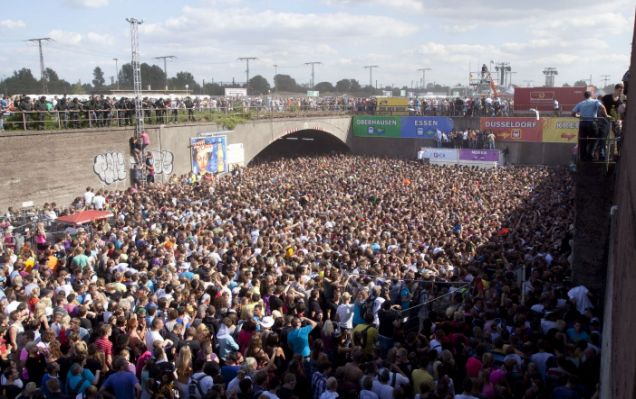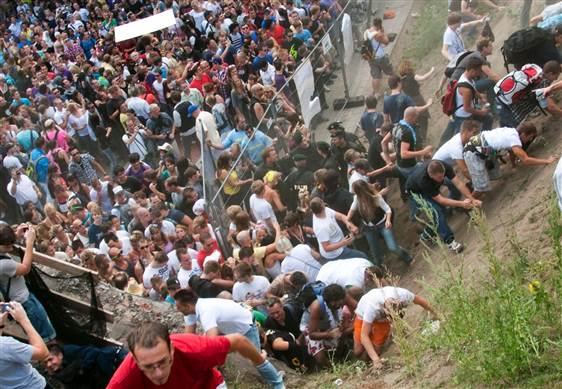The Love Parade is an immensely popular free access electronic dance parade that began in Berlin in the late 80s. For over a decade, the parade was held in wide open areas, but in 2010, the festivities were held in a former freight station in Duisburg, Germany. The max capacity of the station – which is closed in on all sides – is about 250,000, and there were reportedly close to 500,000 people there, in addition to 3,000 patrolling police officers.
Physicists from the Risk Center at the Swiss Federal Institute of Technology at ETH Zurich have spent the last few months conducting a study on the disaster that left 21 dead and 500 injured. Autopsies of the deceased showed that all of the deaths resulted directly from complications related to rib cage crushes, thus proving stampedes were the cause.
Up until recently, most have viewed the Love Parade crowd disaster as a result of sheer panic. But this new study led by Dirk Helbing, a professor of sociology at ETH Zurich, puts forth a different view.
Through examining a series of YouTube videos, Google Map images, and photographs from the disaster, all of which he tried to place in chronological order, Helbing concluded that the crowd was not panicked, but rather that they acted quite reasonably. He believes they simply had no chance against the “natural laws” of crowds.
Helbing argues that too many people entering the station at once led to what he calls “crowd turbulence.” If an entrance is jam packed, and one person elbows or stumbles into the person in front of them, a sort of domino effect can happen.
In the study’s conclusion, he attributes the disaster to three main causes:
1.) Organizational issues which caused a local crowding
2.) Weak measures to deal with the resulting crowd
3.) Communication problems that contributed to delays in the evacuation of the people
Here’s what can be done to prevent disasters like this: Most importantly, a plan must be in place. What will security and police officers do if a situation does arise? What is their plan for evacuation? Studying other events where situations were avoided is a great method for devising a solid plan. Learn what not to do by studying those that ended poorly as well.
Secondly, never oversell or overpopulate. You might want to push attendance for the extra revenue, but expenses from an unruly crowd will make those that you gained from overselling pale in comparison.
And last but not least, communication and organization are key. Security officials working alongside outdoor crowd control equipment to manage the flow of people will ensure that the crowd moves orderly and without turbulence.
We wish we didn’t have to cover stories like this. Disasters of this sort are truly unfortunate, but what’s more unfortunate is the fact that many of these problems are largely preventable. Hopefully the study put forth by Helbing and his team will reinforce this.


